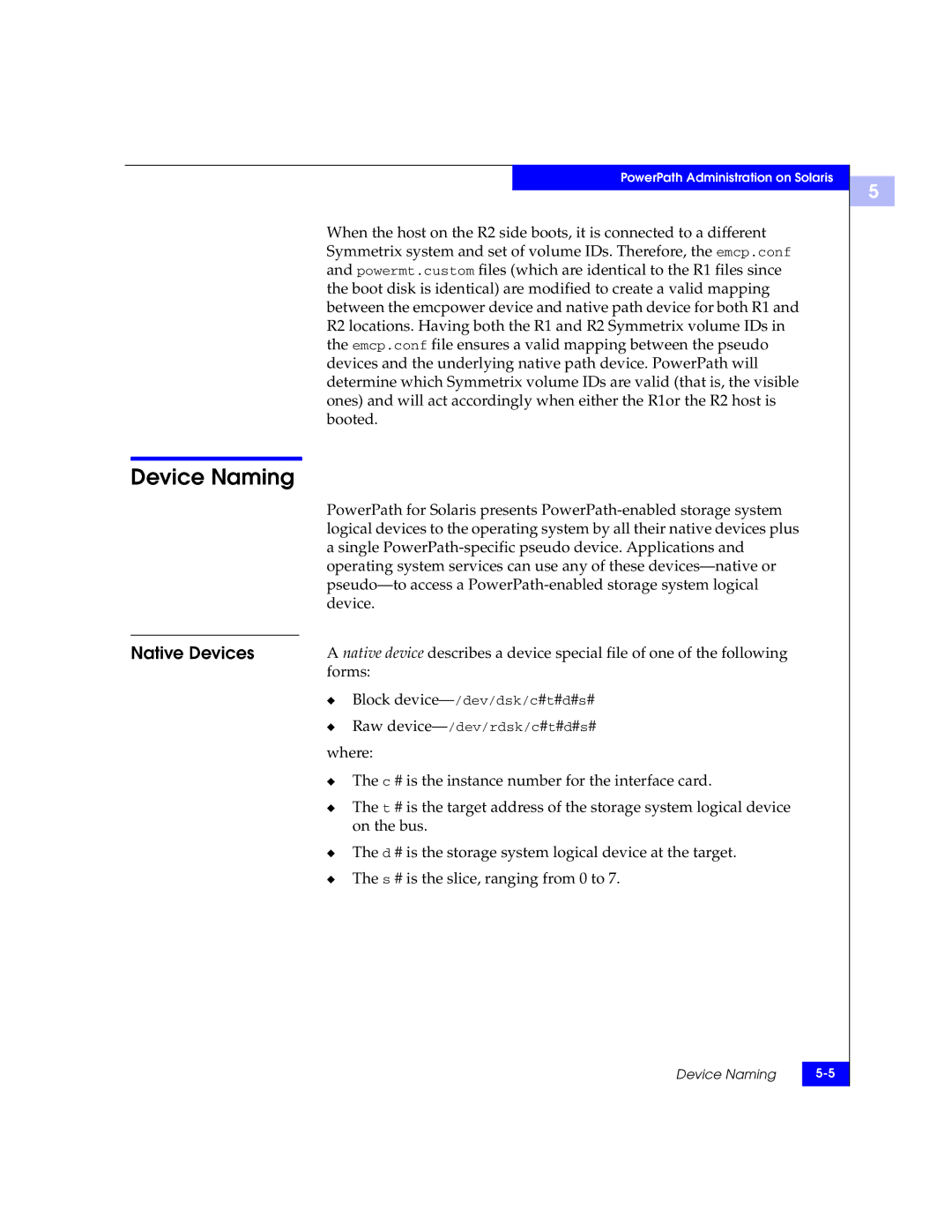
PowerPath Administration on Solaris
When the host on the R2 side boots, it is connected to a different Symmetrix system and set of volume IDs. Therefore, the emcp.conf and powermt.custom files (which are identical to the R1 files since the boot disk is identical) are modified to create a valid mapping between the emcpower device and native path device for both R1 and R2 locations. Having both the R1 and R2 Symmetrix volume IDs in the emcp.conf file ensures a valid mapping between the pseudo devices and the underlying native path device. PowerPath will determine which Symmetrix volume IDs are valid (that is, the visible ones) and will act accordingly when either the R1or the R2 host is booted.
Device Naming
PowerPath for Solaris presents
Native Devices | A native device describes a device special file of one of the following | |
| forms: | |
| ◆ | Block |
| ◆ | Raw |
where:
◆ The c # is the instance number for the interface card.
◆ The t # is the target address of the storage system logical device on the bus.
◆ The d # is the storage system logical device at the target. ◆ The s # is the slice, ranging from 0 to 7.
Device Naming | |
|
|
5
